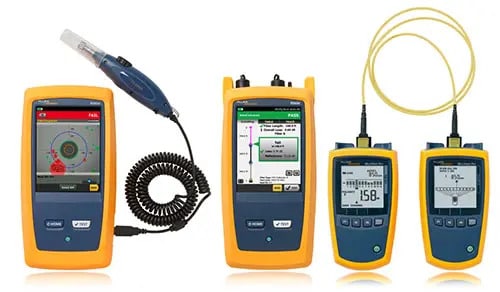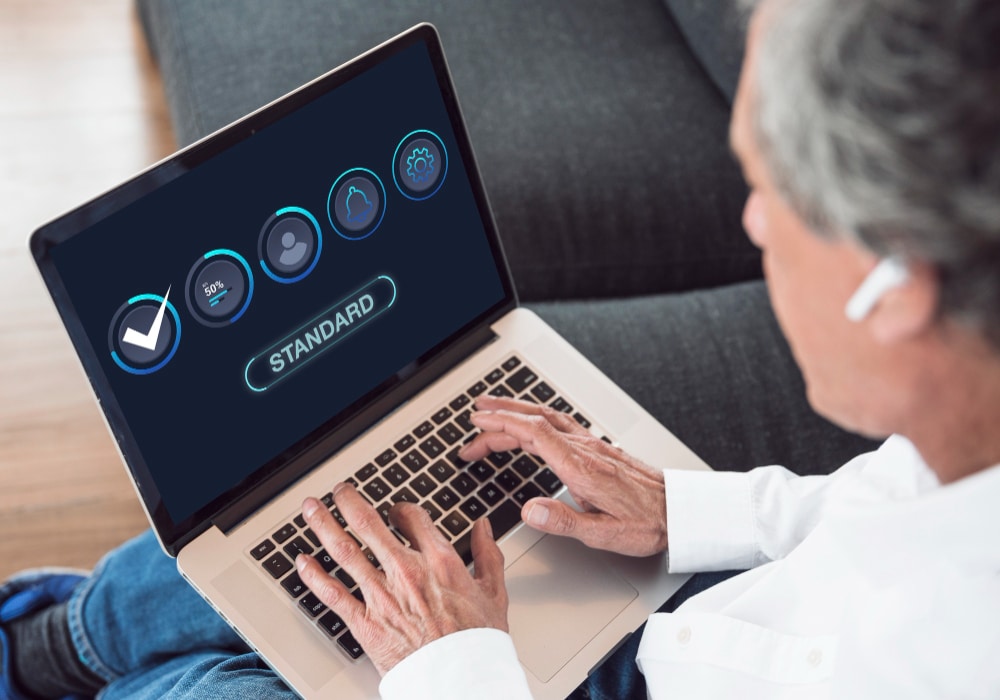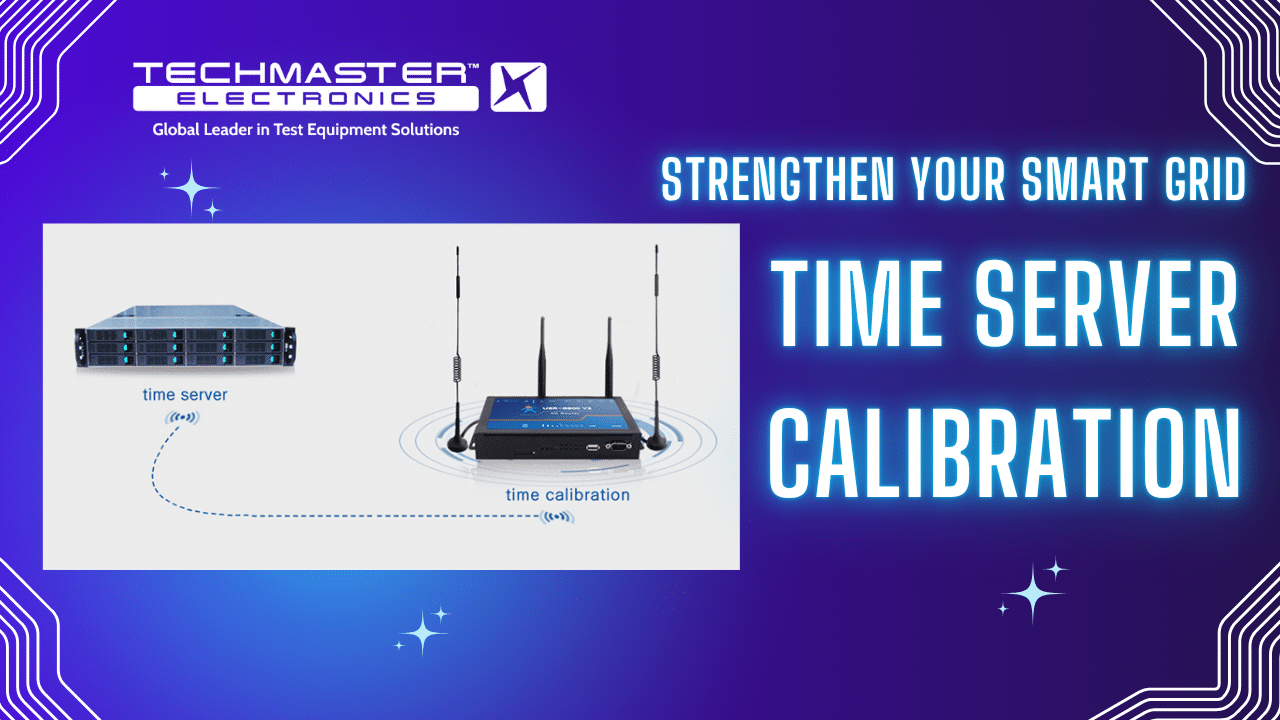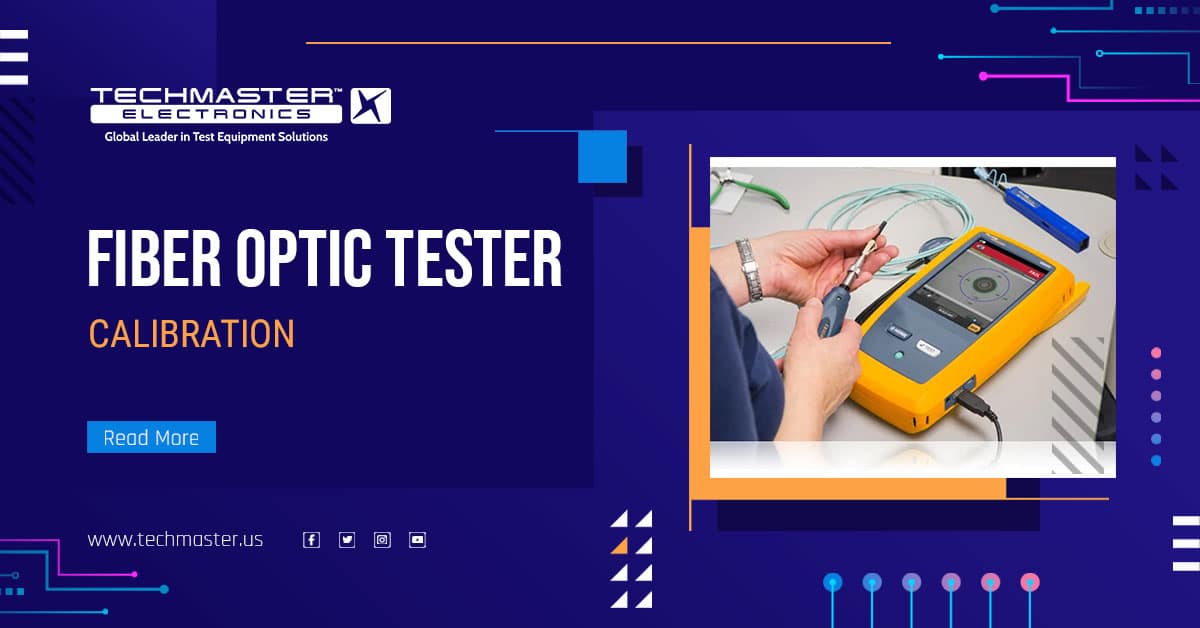Introduction to Fiber Optic Tester Calibration
Fiber‑optic networks carry an enormous amount of information, so equipment used to test and maintain those networks must be accurate and reliable. Fiber optic tester calibration—sometimes called FO tester calibration service or fiber optic meter calibration—is the process of comparing a test instrument against a traceable reference to make sure it reads correctly. For example, every optical power meter sold by reputable manufacturers is calibrated against standards maintained by the U.S. National Institute of Standards and Technology (NIST). This traceability ensures that engineers and technicians can trust the measurements their devices provide.

Why Fiber Optic Tester Calibration Matters
Measuring optical power and loss relies on logarithmic units. dBm represents absolute power; 0 dBm equals one milliwatt, and dB represents relative changes, such as loss or gain. To ensure that these numbers have real meaning, meters must be adjusted to national standards. NIST calibrates optical power meters at 850 nm, 1300 nm and 1550 nm using transfer standards. Calibration laboratories compare their working standards to these reference devices, so that each meter they service reads the same as the national standard.
No measurement is perfect. Typical uncertainties for fiber‑optic power measurements are around ±5 % (about ±0.2 dB). Loss measurements have higher uncertainties—0.2 to 0.5 dB—and return‑loss measurements can vary by about 1 dB. Knowing these limits lets system designers build in sufficient margin and helps technicians interpret readings correctly. Without calibration, two meters that should match can disagree by a surprising amount.
Why Regular Fiber Calibration Service Is Essential
Even high‑quality test instruments drift. Temperature changes, vibration and component aging cause small shifts in sensitivity. Wavelength settings may change over time, and reference cables used for tests add their own variation. Without regular fiber calibration service, two identical power meters may give different results. A miscalibrated meter might show that a transmitter meets its power budget when it is actually underperforming, leading to false pass/fail decisions. Routine calibration ensures that your measurements remain trustworthy.
Optical time‑domain reflectometers (OTDRs) need calibration, too. An OTDR measures both power and time to create a picture of loss along a fiber. If its time base or index of refraction setting is off, the distance it calculates will be wrong. Calibration of OTDRs checks the instrument’s loss scale against a calibrated power meter and verifies its distance scale by checking the time base and index of refraction. Standards such as IEC 61746‑1 and TIA/EIA‑455‑226 describe how to perform these checks. Many labs and manufacturers recommend sending OTDRs to an accredited facility for calibration.
How to Calibrate Fiber Optic Testers (Power Meters and OTDRs)
A structured FO/FC tester calibration process keeps instruments accurate:
-
Inspection and reference setup. Technicians clean and inspect all connectors. They then connect the meter to stabilized laser or LED sources at common wavelengths—850 nm, 1310 nm and 1550 nm—through reference cables that are traceable to NIST transfer standards.
-
Adjustment, verification and documentation. The device under test is compared to the reference and adjusted. Linearity is checked by applying known attenuation and confirming that the meter responds as expected. Measurements are repeated for stability, and results are recorded in a certificate with data and uncertainty budgets.
Calibrating an OTDR requires verifying both its loss and distance scales. The OTDR’s reading is compared with a calibrated power meter to confirm that a 1 dB change in input yields a 1 dB change on the trace. The distance scale is verified by checking the time base and index of refraction. Because these checks often need specialized equipment, many users send their OTDRs back to the manufacturer or an accredited laboratory.
Between formal calibrations—typically performed each year—technicians can do quick checks. Comparing the meter’s reading against a trusted reference or using a stable light source helps detect drift early. If results change significantly, schedule a recalibration sooner.
Choosing a FO Tester Calibration Service Provider

Selecting the right fiber calibration service involves more than finding a lab with the right equipment. In the United States, there are three common levels of calibration:
-
Commercial or traceable calibration. This provides basic assurance that the instrument meets manufacturer specifications but may not include detailed data.
-
ANSI/NCSL Z540‑1 calibration. This adds documentation and traceability requirements, including a Test Accuracy Ratio (TAR) of at least 4:1.
-
ISO/IEC 17025 accredited calibration. This global standard requires labs to demonstrate technical competence, measurement traceability and participation in proficiency testing. Certificates from accredited labs include measurement data and uncertainty budgets and are widely accepted.
Beyond choosing the right level, evaluate a provider’s capabilities. Some accredited labs calibrate optical sources, sensors, attenuators and spectrum analyzers and work with many popular brands. Others can handle power meters across wide wavelength ranges with very low uncertainties and offer fast turnaround times. Look for features such as on‑site calibration, free pickup and delivery, and online portals for managing certificates.
Techmaster Electronics: Your Partner for Calibration
For companies seeking a reliable partner, Techmaster Electronics stands out. Since 1989, Techmaster has been a recognized leader in electronic test equipment calibration. The company operates accredited laboratories with state‑of‑the‑art facilities. In addition to calibration, Techmaster offers repair, sales and rentals, giving clients a single point of contact for the entire lifecycle of their equipment. Customers can manage certificates through an online portal, and free pickup and delivery are available in select regions. Techmaster offers three calibration levels—Traceable, Z540 and ISO/IEC 17025—and can complete expedited calibrations in one to two business days. If you need your fiber‑optic testers calibrated quickly and professionally, request a quote or contact their specialists for a tailored solution.
Benefits of Fiber Calibration Service
Investing in a professional calibration service delivers several advantages:
-
Trustworthy measurements. Accurate, traceable readings reduce troubleshooting time and prevent unnecessary reworks. Knowing the uncertainty helps engineers set proper network margins.
-
Audit readiness. Many industries require proof of equipment accuracy. Certificates from ISO/IEC 17025‑accredited labs make internal and external audits smoother.
-
Efficiency and lifecycle support. Calibrated equipment reduces false failures and unexpected downtime. Providers that combine calibration, rentals and repairs simplify budgeting and logistics.
-
Confidence for new users. Technicians who are new to fiber optics can trust calibrated instruments, which helps them learn and apply proper testing techniques.
When planning calibration, consider practical issues. Annual intervals are typical, but critical or harsh environments may require shorter cycles. Grouping multiple devices or disciplines reduces logistics. Check turnaround times, and confirm that the lab’s accreditation covers the wavelengths and power ranges you use.
Take the Next Step
Accurate testing equipment is the foundation of reliable fiber‑optic networks. To streamline your calibration program and benefit from decades of expertise, explore Techmaster Electronics. Their accredited laboratories, quick turnaround and flexible service levels—including Traceable, Z540 and ISO/IEC 17025 calibrations—keep your instruments in tolerance. You can manage certificates through their online portal and take advantage of free pickup and delivery in select regions. Visit Techmaster’s website or request a quote today to see how a tailored calibration plan can help your fiber‑optic testers perform at their peak.
Fiber Optic Tester Calibration — Quick Visual Guide
ISO/IEC 17025
🔎 What it is
Calibration compares a tester to a NIST-traceable reference so its dB/dBm readings match the standard.
- Works for power meters & OTDRs
- Typical uncertainty ≈ ±0.2 dB
🛡️ Why it matters
- Trust results when troubleshooting attenuation & return loss
- Stay audit-ready with documented certificates
- Reduce false fails & rework — save time and budget
📊 Service levels
- Traceable — basic certificate
- Z540-1 — certificate + data
- ISO/IEC 17025 — data + uncertainties
⚙️ Calibration process (step-by-step)
Inspect & clean connectors; check reference leads.
Connect to stabilized sources at 850, 1310 & 1550 nm.
Adjust readings & verify linearity with known attenuation.
Document data & uncertainties; apply recall label.
Tip: Between annual services, do quick checks against a trusted source to catch drift early.
🗓️ When to calibrate
Typical interval: 12 months. Calibrate sooner after repairs, harsh use or if results disagree.
✨ Calibration Service Benefits
Ensure measurement accuracy, extend tester lifespan, maintain ISO compliance, and minimize costly downtime.
📐 OTDR specifics
Verify both loss and distance: check time base and index of refraction; compare traces to a calibrated meter.
🤝 Partner with Techmaster Electronics
Accredited labs • Three service levels • Online certificate portal • Free pickup/delivery • Expedited 1–2 day options
Fiber Optic Tester Calibration
Ensuring measurement accuracy for next‑generation networks
Precision Matters
Fiber‑optic networks are the backbone of global communications. A single dB of error can hide splice loss or push channels out of budget. Typical power meter uncertainty is ±0.2 dB (≈5%), so uncalibrated testers risk false results and costly downtime.
±0.2 dB
Typical uncertainty in fiber power measurements
Know Your Toolkit
OTDR
Optical “radar” that locates splices, bends and breaks. Calibration ensures distance and loss readings are accurate.
Power Meter
Measures absolute optical power and signal loss. Calibration verifies levels meet design specifications.
Microscope
Inspects connector end faces for dirt and damage — a leading cause of measurement error.
Reference Cables
Reference leads used in calibration; keep them pristine and traceable to maintain accuracy.
Benefits vs Risks
Benefits of Calibration
Regular calibration is a strategic investment — it improves accuracy, ensures compliance, optimizes costs and protects your reputation.
Risks of Skipping
Neglecting calibration causes flawed diagnoses, wasted resources, extended downtime and loss of client trust.
Traceability Chain
Professional calibration links your device directly to internationally recognized standards, ensuring that your results are accurate and defensible.
Service Levels & Provider
Traceable
Basic calibration with NIST traceability. Ideal for routine checks.
Z540‑1
Includes data and documentation to meet US defense/aerospace requirements.
ISO/IEC 17025
Accredited calibration with uncertainties. Globally recognized compliance.
Why choose Techmaster?
- 30+ years of calibration experience
- On-site & mail-in services, repair & rental options
- Online certificate portal & free pickup/delivery in select regions
- Expedited calibration (1–2 business days)
Best Practices for Fiber Calibration
Clean & Inspect
Contaminated connectors are a primary source of error. Always clean and inspect every connector before testing.
Use Launch Cables
When using an OTDR, launch cables eliminate the dead zone and allow accurate first-event measurements.
Quick Checks
Between annual calibrations, compare results to a reference meter to detect drift early and schedule recalibration.
Make Calibration Your Competitive Advantage
Trust Techmaster to keep your fiber‑optic testers in top condition. Accurate measurements build reliable networks.
Infographic by Techmaster Electronics











